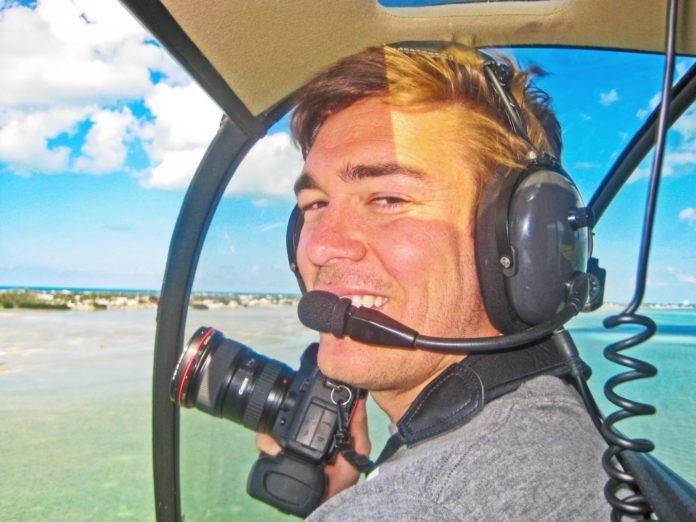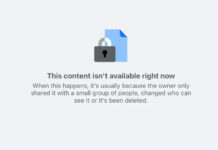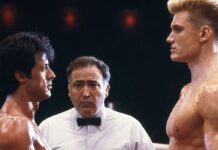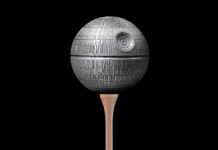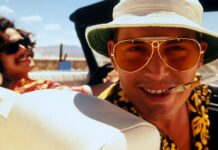Hurricane season runs from June 1 to Nov. 30.
On the morning of August 29th of 2005, Hurricane Katrina plowed into the shores of Louisiana and Mississippi. The killer storm that ravaged the coastal areas would become one of the deadliest and most destructive hurricanes ever. The images and videos are etched in our memories; none more so, than the footage of a Holiday Inn systematically destroyed in Gulfport, Mississippi. The footage would become the marquee footage of the storm’s devastation … and it was shot by Key Largo native and professional storm chaser, Mike Theiss.
The following year, his film earned him an Emmy nomination, and would go on to win awards from the National Press Photographers Association and Photo District News. You can view the footage, along with all of Theiss’ storm chasing videos, on his YouTube channel — Ultimate Chase.
You’ve been fascinated by hurricane for most of your life, do you remember your first hurricane?
Hurricane Floyd in 1987. The eye came over my house and from then on I was hooked. Anything I wrote about in school that was science-related was about hurricanes.
Aside from your first, which storms made the biggest impression as a kid?
Hurricane Andrew. The storm made a huge impact on me — I couldn’t believe how something could be so powerful. Afterwards I just had to learn more about it.
When did you begin your career as a photographer for National Geographic?
In 2003, it was the perfect combination of my passion for photography and extreme weather.
How many tropical cyclones have you documented over your career?
I’ve documented the landfall of more than 40 tropical cyclones, which is pretty extensive in the storm chasing world.
Aside from tropical cyclones, you also take time ever year to chase down tornados in the Midwest. Ever have any close calls?
Yes. The famous El Reno Tornado in 2013 was a real wake up call. The Tornado went for 1 mile wide to 2.5 miles wide in seconds and accelerated its forward advancement. Mix that in with bumper to bumper traffic blocking all the escape routes and I found myself in a real pickle.
You have the distinct honor of having captured the fastest wind gusts on video, what was that like?
In 2004, I captured footage of 155 mph wind gusts shredding a Charlotte Harbor gas station during Hurricane Charley from inside my car. It’s some of my most dramatic footage.
Your footage of Hurricane Katrina from a beachside hotel in Gulfport, Mississippi has become synonymous with its deadly destruction. How did you decide on the location?
I first documented the storm in Ft. Lauderdale where it made landfall. I followed the storm up the coast all the way to Gulfport. When I first spoke to the manager of the hotel I was staying at, he said that engineers had designed the hotel in the aftermath of Hurricane Camille. They built it with breakaway walls and pilings, so that it would give easily and relieve any pressure from rushing water.
What do you remember the most from the entire ordeal?
It was so loud, it was unbelievable. People were terrified and crying, they thought the entire building was going to collapse. I remember being terrified but thinking that I had put myself there — so I might as well document it.
The footage shows that when the storm surge rose, you retreated back into the stairwell and higher floors. How high did the water rise?
At its highest, about 28 feet, and that’s not including the waves on top of the surge. It was then that I understood how serious the situation was and began looking for a roof access to get out. And then all of water that had come in receded within an hour. It was like someone pulled the drain and the water went away.
What was the scene like after the storm?
We went out and started walking around and everything was totally destroyed. It was 99 percent destroyed, and the only reason I don’t say completely, is because the one building left standing was the one we had stayed in. The only thing left from the Waffle House I had just eaten at the day before was a couple chairs bolted to the ground. That was it.
Because of the damage to the roads in and out of Gulfport, you were stuck in the area for a few days after the storm. What were those days like?
For those days I was stuck there, we would walk around and you could smell the death in the air. It’s something I’ll never forget. I feel lucky that I survived, and after that I realized that maybe I don’t need to push it to the end. But I did, however, want to show and share with people how bad hurricanes are, and that it’s not a game being out there.
What’s next on your storm chasing bucket list?
To document a Category 5 and embed the H.E.R.V. (Hurricane Eyewall Research Vehicle) inside to record the wind speeds and barometric pressure. I would never wish for such a powerful storm to occur, but if it does occur, I want to be there to document it.
What advice do you have for locals for this year’s Hurricane Season?
My advice this Hurricane Season would be to stay stocked up on the usual necessities, make sure your batteries are not expired. If you don’t have an emergency kit, I’d say get one and if you already have one, freshen it up. In the Keys we could be trapped for weeks before bridges are repaired. I highly evacuation if a bad one is coming …















